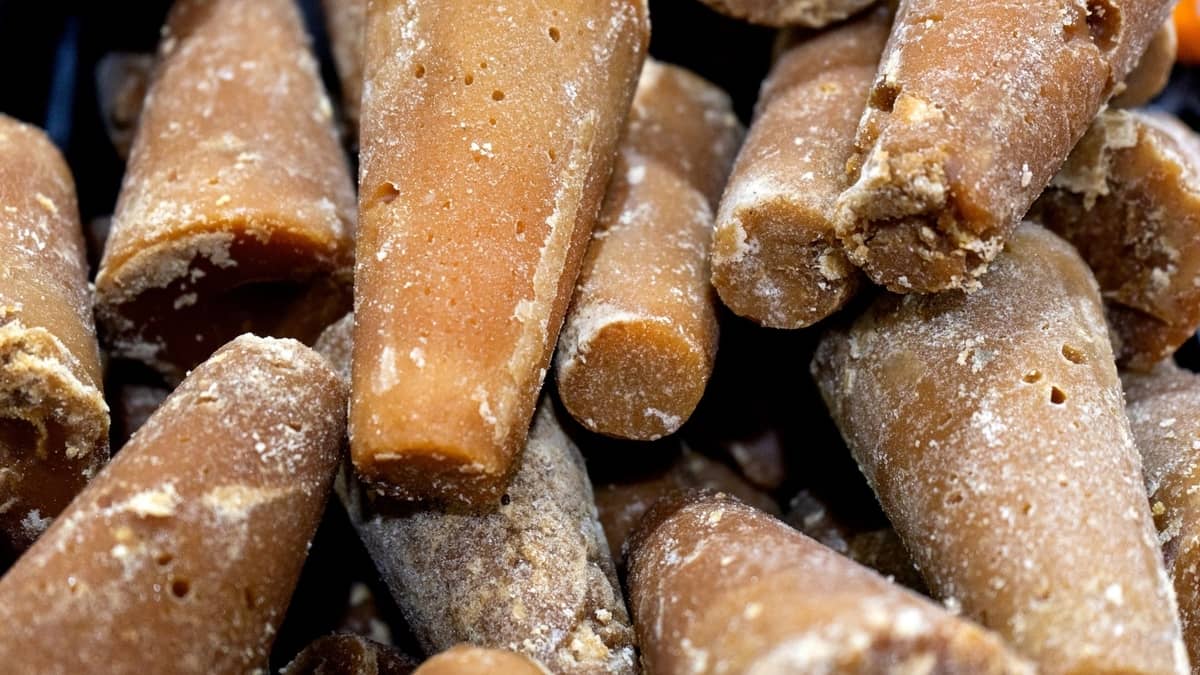Last Updated on November 28, 2021
Sugar candies have been popular for thousands of years. One popular pastime snack was brown sugar cones which came from sugar molds. So, just what is a sugar mold?
Though you may not be familiar with them today, sugar molds have a long history. They are not necessarily popular for making candies anymore, but you can still find them for other uses. In fact, they are now popular to use as decorations.
Brief History Of Sugar
Sugar from sugarcane was first produced sometime after the first century AD in India. Sanskrit literature from ancient India provides the first written documentation of the cultivation and manufacturing of sugar cane.
It was sometime around 4,000 BC in tropical India and Southeast Asia that the extraction of sugar cane juice from the sugarcane plant first happened. This then led to the subsequent domestication of the sugar plant.
Then came the manufacturing of cane sugar granules from sugarcane juice in India. Then, in the early centuries AD, improvements occurred which led to refining crystal granules
After this came the spread of the cultivation of cane sugar to the medieval Islamic world. This resulted in some improvements in the production methods of sugar.
By the end of medieval times, sugar was known all across the world. It was very expensive and considered to be a “fine spice. ” However, around the year 1500, thanks in part to technological improvements and New World sources, it became produced in larger bulk quantities and began to become more affordable.
Then, at the beginning of the 16th century, the cultivation and manufacturing of cane sugar spread to the West Indies and tropical areas of the Americas. This led to intensive improvements in the production of sugar took place in the 17th through 19th centuries.

What Is A Sugar Mold?
A sugar mold is a long block with a series of depressions that are used for forming sugar cones. They are often made from long blocks of wood, though they can also be pottery. Sugar molding is how sugar was first sold to people.
Raw sugar cane syrup was poured into the depressions as part of the candy-making process. Once dry, it formed raw brown sugar cones that were wrapped in paper and then sold to customers.
These cones were easy to form, sell, transport and store. At the time of their invention, there weren’t any other processing methods for making refined sugar. They became popular for making sweet treats as they were convenient to use.
Though most sugar molds had a basic shape, such as a cone or cylinder, some had more intricate designs. They would have small decorations in order to create some sort of fancy pattern. These fancier designs were more popular among the wealthy.
History Of Sugar Molds
Sugar molds go all the way back to medieval times. They continued to be commonly used through the 19th century. During this time, brown sugar was generally only sold in cone shapes that came from a sugar mold. In some cases, sugar would also be sold in a loaf form
It wasn’t until the 1820s that the term “granulated sugar” was first used. This then transformed the way buyers and chefs would use sugar in baking. Before this, the sugar needed to be chipped off of the cone and it was then being sifted to a level of fineness desired by the baker.
Though they are not nearly as popular as they used to be, sugar molds are still used throughout Mexico. The brown sugar cones are still part of the tequila-making process.
In addition, smaller plastic versions of sugar molds are used today in the northeastern United States. They are used to make maple sugar candies.
Luxury Living Furniture 4 Hole Rustic Wooden Sugar Mold Candle Holder, Pecan
Size
Sugar molds come in a variety of different shapes and sizes. Though most are only a few inches tall and a few inches wide, some have been much larger. In the 15th century, there was one that was 14 inches wide and three feet tall. Due to its large size, the pieces had to be broken off by using special iron sugar cutters.
Oftentimes they would range in size from 5-35 pounds, however, most would be between three to four pounds. They are often two to four feet in length, though some can be longer. Most of them will have 12 holes, though they can have less or more depending on the size.
Common uses today
Though some sugar molds are still used today for their original purpose, they are also popular decor items. They are commonly sold as collectibles or as candle holders. They can be found at antique stores and online as well.
Though there are some authentic sugar molds for sale, many are reproductions specially made for interior decoration. Some people also choose to make their own, as it can be a relatively easy project for those with wood craftsmanship experience.
Some smaller versions of sugar molds exist today that consist of different intricate shapes and designs. They are popular for adding to cakes or other baked goods as edible decorations. Many of these molds are silicone, which makes them easy to use and allows for more attention to detail in the designs.
A Sweet Invention
Molding sugar in sugar molds traces all the way back to medieval times and was still common until the 19th century. It was a practical and efficient way to form sugar into cones or loaves to be easily sold to customers.
Today, sugar molds are still used in Mexico for making tequila. You can also find smaller forms in northeastern America for making maple sugar candies. There are also molds for making small decorative sugar candies.
Most commonly, you will see them today as decorations, particularly for holding candles. You can find them online or even at some antique stores. They can make for an elegant centerpiece on dining room tables.
Do you have any questions regarding what is a sugar mold? If so, please ask any questions about sugar molding and how they are used in the comment section down below.

Ever since she was a young girl, Anna has been a lover of desserts. As an adult, she enjoys
baking a variety of desserts from cakes, cookies, brownies, bread, and more from scratch. She
enjoys sharing her passion for baking with others who also have a sweet tooth. From properly
measuring ingredients to making sure they are the correct temperature, Anna knows the
importance small details can make in baking. She wants to share her experience with others in
hopes they can make the most delicious baked goods. When she’s not busy blogging, Anna
enjoys trying new recipes in the kitchen.


